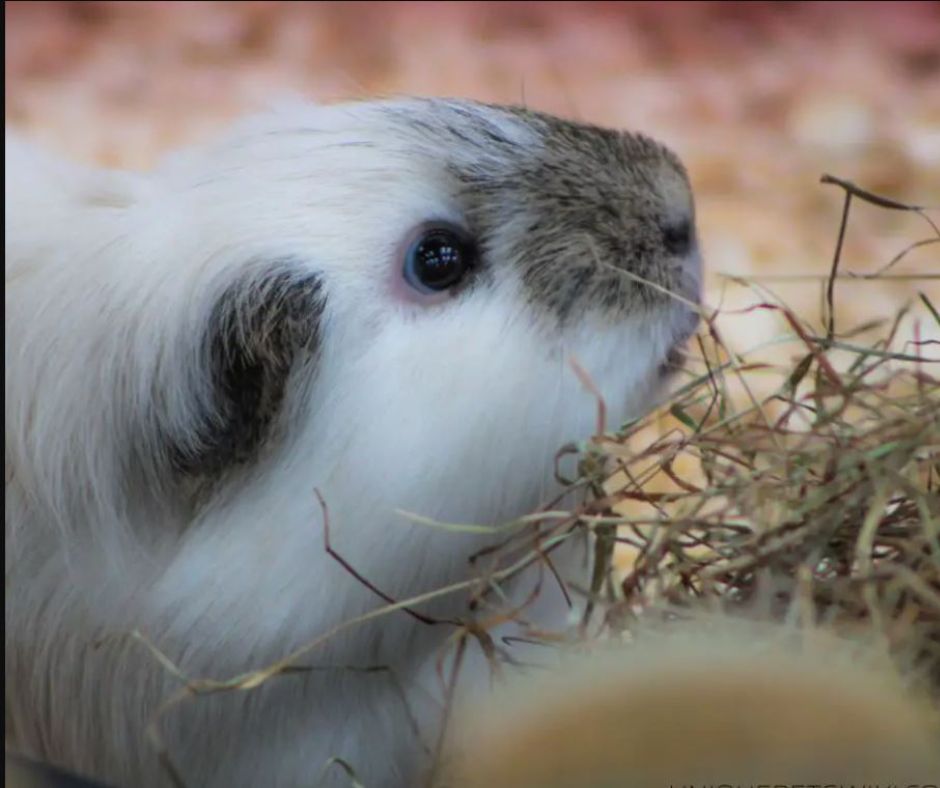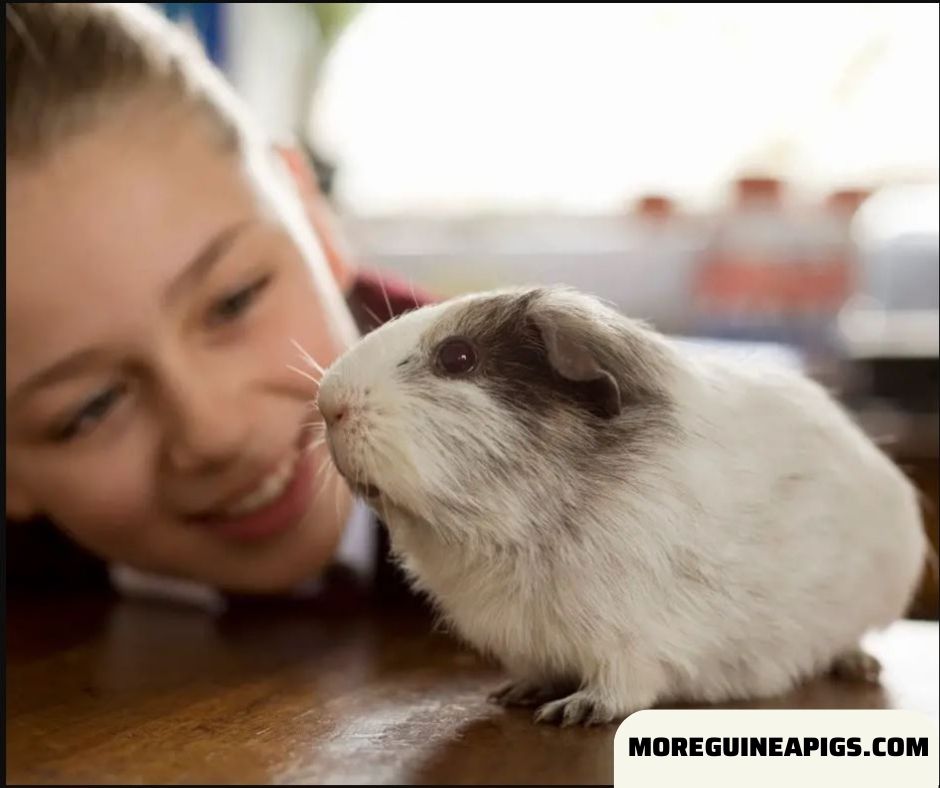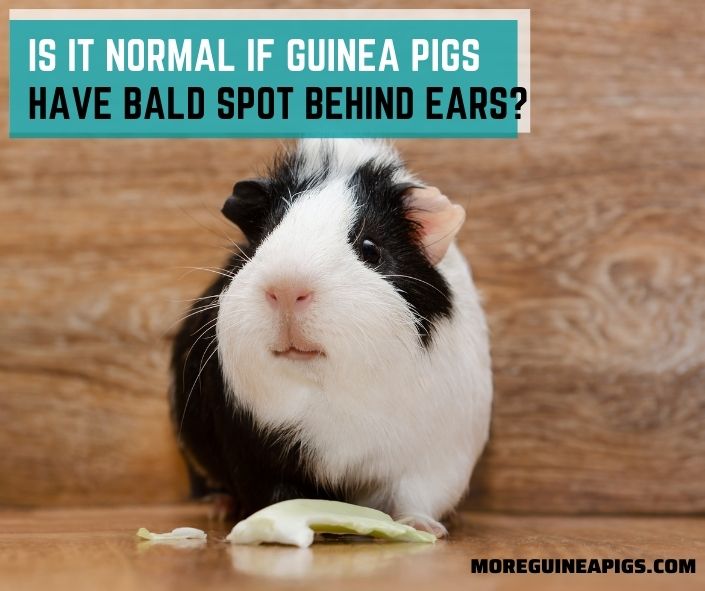Everything about Himalayan Guinea Pig
Guinea pigs come in more than 13 different breeds, and none of them are alike. As a result, they are classified into different breeds. One of them is the Himalayan guinea pig.
Himalayan guinea pig owners, like other pet parents, are concerned about their pets’ behavior, temperament, diet, health, and socialization.
The information in this article will also assist you in comprehending the behavior and characteristics of the Himalayan guinea pig as a pet. So, read the entire article to ensure that your pet receives the best and healthiest care possible.
Are Himalayan Guinea Pigs Rare?
Yes, Himalayan guinea pigs are rare, but not quite as rare as they appear. Because they are born completely white, they are often referred to as albinos.
After 2 to 4 weeks, they develop black and brown spots on their ears, eyes, and legs. These guinea pigs come from South America; thus, the name Himalayan is a misnomer.

Himalayan Guinea Pig Overview
This guinea pig is given the misnomer Himalayan because it develops numerous color spots as it grows older. This is due to the presence of recessive genes and incomplete dominance of genes responsible for black or brown color.
The Himalayan guinea pig has the following general features and physical attributes.
| Name | Himalayan guinea pig |
| Origin | South America |
| Size | 1.5 and 2.6 lb, 8 and 12 inches. Male Himalayan can reach up to 14 inches |
| Lifespan | 5 to 7 years but the average is 4.8 years |
| Colors | White coat (having black and brown spots on legs, ears, and eyes) and red or pink eyes. |
| Temperament | Social, gentle, loveable, highly adaptable to weather changes, and get scared easily. |
| Diet | Hay and vegetables |
| Suitable for | Beginner (recommend to people with no children at home) |
Colors and Appearance
Because of their white fur or coat, Himalayan guinea pigs resemble albinos. Because their hair follicles are weak, they have short hair on their bodies.
When the hair becomes excessively long, it begins to shed. As a result, mite and parasite infestations are less common in Himalayan guinea pigs.
In comparison to other guinea pig breeds, the Himalayan guinea pig has a thick coat. This aids in their adaptation to both hot and cold environments.
The typical weight of a Himalayan is 1200 grams, while male Himalayans can gain up to 1500 grams. A Himalayan guinea pig can grow to be eight to twelve inches long.
The short hair, thick coat, round nose, vivid eyes, and white coat with dark patches on the Himalayan guinea pig’s body make it appealing.
The Himalayan guinea pig’s capacity to balance its body weight is excellent and better than other breeds, according to study conducted at the university of animal husbandry and veterinary sciences in Lahore.

Himalayan Guinea Pig Personality
Himalayan guinea pigs are ideal pets for beginners since they are lovely, gentle, calm, affectionate, and social. It takes time for them to adjust to a new environment and people.
Even when you speak loudly in front of them, they become terrified soon. That is why veterinarians do not recommend them for families with a large number of children.
Other than cages, you should have different hiding places for your Himalayan guinea pig, such as boxes, tubes, and hay nests, when you acquire one.
They prefer to live in pairs or groups, so buy in pairs if possible. If you’re adding a new Himalayan to an existing group, keep an eye on how they interact with one another.
Conservation Status
According to the international union for conservation of nature, Himalayan guinea pig is rare. However, because individuals have begun to keep this lovely guinea pig as a pet, its number is steadily expanding.
Although the Himalayan guinea pig has been removed from the endangered guinea pig list, it is still extinct in the wild.
How to Care Himalayan Guinea Pig as Pets?
The Himalayan guinea pig requires consistent attention and care. They require only a few minutes to groom due to their short hair, but they must be groomed on a regular basis.
Because of the white color of the coat, it is easily soiled. So, it is vital to groom them once a week to keep them happy and healthy.
Himalayan guinea pigs eat hay and vegetables, just like other guinea pig breeds. However, you can give them their favorite treats occasionally.
Various diseases, such as respiratory, eye, ear, and respiratory infections, are common in Himalayans. Himalayans, like other guinea pigs, do not synthesize vitamin C on their own, so supplement their diet with it.
Vitamin C boosts the immune system of animals. Food allergies are common in Himalayan guinea pigs. When you give them new food, make sure to examine the outcome before giving it to them again.
As a result, Himalayan guinea pigs require a more sanitary environment, soft litter in the cage, nutritious food, and consistent care.
Also read: Complete Guinea Pig Care Guide
How Do You Know If a Guinea Pig is a Himalayan?
You can easily recognize whether your guinea pig is Himalayan or not. The behavior and the way of interaction of Himalayan are similar to other guinea pigs but their physical characteristics and features are different.
They can be easily recognized by short fur, white color fur, red or pink eyes, and dark color patches on the body such as ears, eyes, and legs.
How Much Does a Himalayan Guinea Pig Cost?
Because the Himalayan guinea pig is a unique breed, its price is higher than that of other guinea pig breeds. Himalayan guinea pigs can cost anywhere from $20 to $55.
However, the price varies according on the country or area, as well as whether you buy online or in person. In North America, for example, the cost of Himalayan is more than in South America.
Where Can You Buy a Himalayan Guinea Pig?
Himalayan guinea pigs can be purchased from a local pet store or through online pet stores such as Petco and Petfinder. You can acquire an online medical health clearance record of the pet if you buy it from an online pet store.
Because he or she could be carrying a contagious infection that could infect other pets, such as a respiratory infection.
Guinea Habitat Guinea Pig Cage by Midwest
Do Himalayan Guinea Pigs Get Along with Other Pets?
Yes, Himalayan guinea pigs are social creatures who enjoy interacting with different guinea pig breeds. However, they cannot be kept with other species such as rabbits and cats.
When other pets enter their territory, Himalayan guinea pigs get territorial and respond.
Living with other guinea pigs reduces the stress in the Himalayans. When a Himalayan guinea pig is left alone, it becomes fearful and agitated.
So, carefully introduce new Himalayans and keep them in pairs or groups but of the same breed. This will promote rapid growth, optimum digestion, and a healthy life free of stress.
Also read: Do Guinea Pigs Need Cage Mates? 4 Steps to Introduce New Guinea Pigs
Ferplast Cavie Guinea Pig Cage
Conclusion
Himalayan guinea pigs are unique among guinea pigs in that they require extra care and attention.
Himalayans have unique phenotypic and genotypic characteristics, although their feeding and health issues are comparable to those of other guinea pigs.
Himalayan guinea pigs need regular grooming, nail trimming, and brushing, at least once a week.








